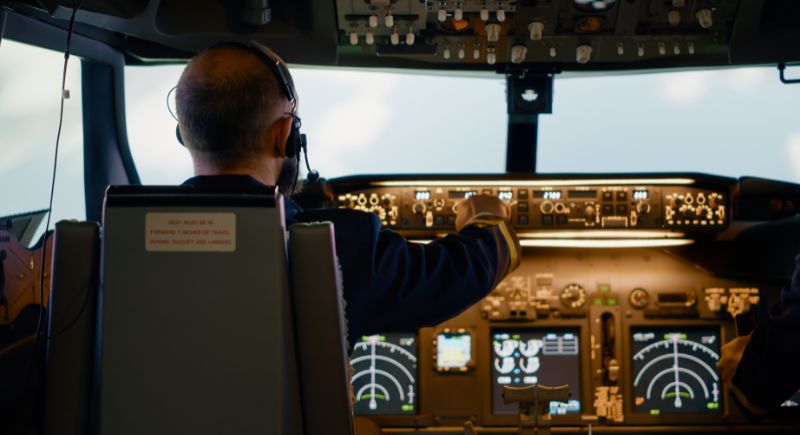When people hear someone is a pilot, their curiosity kicks in immediately. They want to know about turbulence, emergency landings, exotic layovers, or what it’s like to fly across the Atlantic. But one question almost always follows: “How much do you make?” When one first officer shared his earnings publicly, the numbers alone caused jaws to drop.
Garrett Ray, a U.S.-based pilot who works for a major airline, explains everything on his YouTube channel.
Breaking Down the Numbers
As first officer, often referred to as a co-pilot, Garrett earns around $216 per flight hour. That number sounds impressive, and it is. But it doesn’t tell the full story.
Pilots are only paid from the moment the aircraft starts moving on the runway until it stops at the destination gate. That means delays, layovers, pre-flight prep, and long waits at the airport often go unpaid.
In a typical month, Garrett logs around 80 hours of flight time, totaling about $17,280. While that’s a strong income for hands-on work, it often requires double that time away from home. A common schedule might include a flight from JFK to Salt Lake City, followed by a 22-hour layover, then a return flight. That’s two full days away from home, with compensation for only about 10 hours in the air. Factor in transit, prep, and hotel time, and the workload extends far beyond what the paycheck reflects.
To maximize earnings and minimize downtime, these pilots have to become strategic with trip selection. Garrett carefully plans his monthly routes. One recent example involved deadheading from LaGuardia to Dallas, meaning the pilot traveled as a passenger to reach their next assignment, followed by operating the return flight. The total time away from base was under 10 hours, and the trip paid roughly $1,575. It’s not always possible, but these are the kinds of schedules pilots compete to grab.
Deadheading has its perks. While not flying, Garrett often spends time working on his laptop or catching up on rest. It’s a flexible window, but again, it’s only valuable if followed by a well-paid working leg.
Not every assignment is so streamlined. Many pairings include multiple segments, overnight stays, and extended downtime between flights, all of which impact overall efficiency and earnings. Pilots often spend off-hours analyzing their schedules, balancing flight time with personal time, and weighing whether a given trip is worth the extended absence from home.
The Coveted Captain’s Chair

Image via FreePik/DC Studio
Then there’s the captain’s seat. Captains earn significantly more. Moving up from first officer can mean a jump to $340 per hour or more. That brings monthly earnings close to $27,200. However, seniority controls everything in the airline world, and getting promoted can take years depending on the airline, aircraft type, and base location. Some pilots remain first officers far longer than the public assumes. It’s not unusual to wait a decade before sliding into the captain’s seat.
The reality behind the paycheck often surprises people more than the amount itself. Outsiders picture luxury hotels, exotic destinations, and near-constant flying. Travel perks and the thrill of the job are all part of the appeal. But for many pilots, it’s a mix of overnight stays in midrange hotels, quiet airport terminals, and long stretches of schedule planning.
Pilots like Garrett know how to make the system work. By cherry-picking trips that fit into tighter windows and minimizing idle time, he boosts his take-home pay without burning out. This hustle paints a more complete picture of airline life beyond the glam.